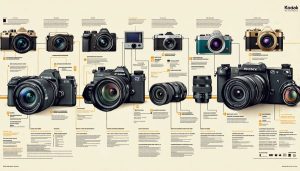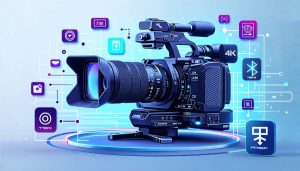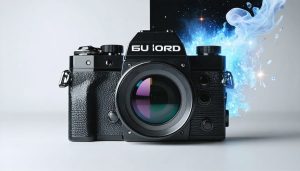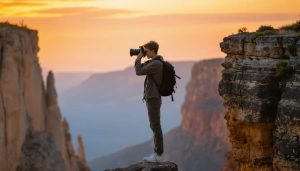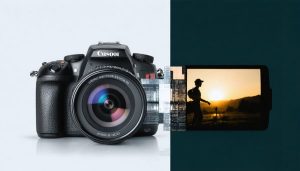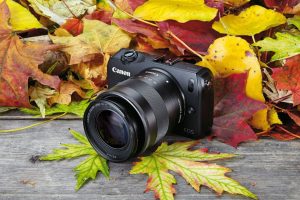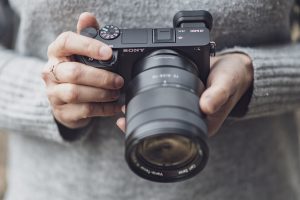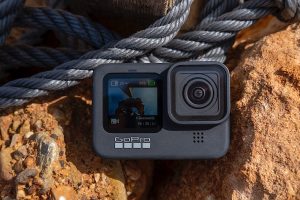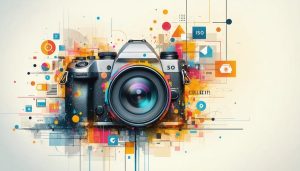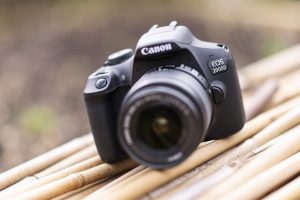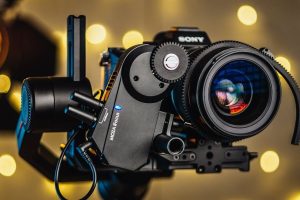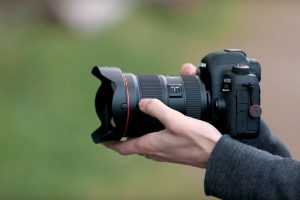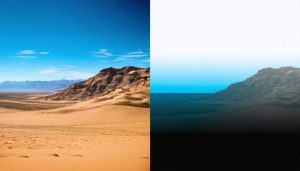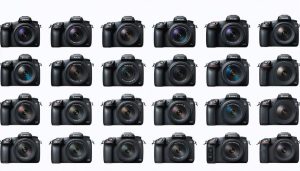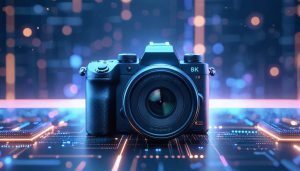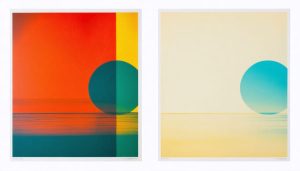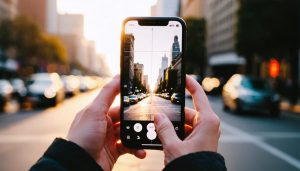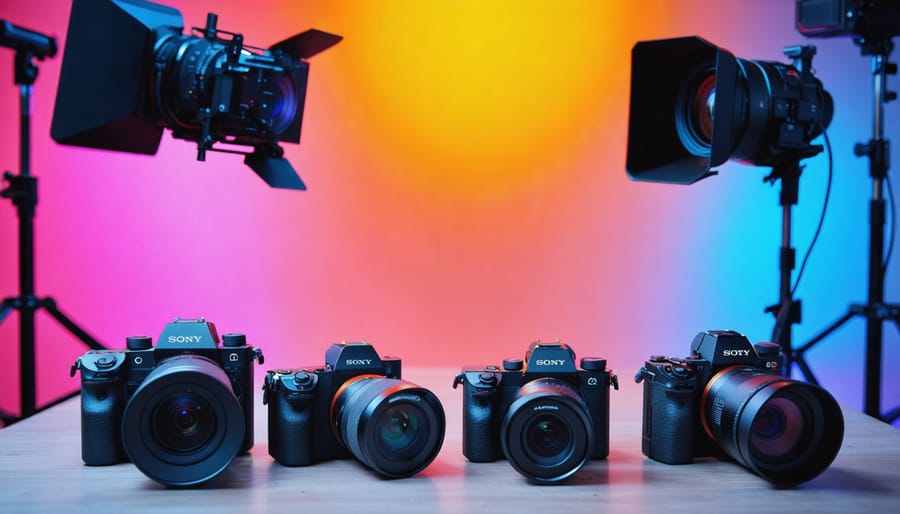
Choose a cinema-grade mirrorless camera with 4K/60fps capability and professional color profiles for music video production, as the rapid evolution of video technology has made professional-quality gear more accessible than ever. Modern cameras like the Sony A7S III, Canon R5, or Blackmagic Pocket 6K combine exceptional low-light performance, superior autofocus, and robust recording options essential for music video creation.
Match your camera selection to specific music video requirements: slow-motion capabilities for dynamic performances, dual card slots for backup recording during live shoots, and advanced stabilization features for smooth tracking shots. Professional codecs like ProRes or RAW recording enable precise color grading in post-production, while high-quality preamps and XLR inputs ensure superior audio monitoring during shoots.
Consider investing in a camera system that grows with your creative vision – one supporting external monitors, professional rigging options, and cinema lenses. Whether capturing intimate acoustic sessions or elaborate music productions, the right camera becomes an extension of your artistic expression, translating musical energy into compelling visual narratives.
Essential Features for Music Video Production
Frame Rates and Slow Motion Capabilities
Frame rate selection is crucial for creating dynamic music videos, and modern digital camera capabilities offer exciting possibilities. The standard 24fps gives that classic cinematic look, while 30fps provides smooth motion ideal for performance shots. For music videos, however, the magic often happens at higher frame rates.
Shooting at 60fps opens up the possibility of half-speed slow motion while maintaining fluid movement – perfect for those dramatic moments when you want to emphasize a particular dance move or emotional expression. If you’re after those ultra-smooth slow-motion sequences, look for cameras that offer 120fps or even 240fps recording capabilities.
Many contemporary cameras allow you to switch between frame rates mid-recording, which is invaluable for music videos. You might want to capture the verses at standard 24fps, then transition to 120fps during the chorus for an impactful slow-motion sequence. Some advanced models even offer variable frame rate recording, letting you create speed ramps within a single take.
Remember that higher frame rates typically require more light and may come with resolution limitations. For instance, while your camera might shoot 4K at 30fps, it might drop to 1080p at 120fps. Always check these specifications when choosing your camera, ensuring it meets your creative vision’s technical demands.
Low Light Performance
When shooting music videos, the camera sensor performance in low light conditions can make or break your production. Most music videos are shot in challenging lighting environments like clubs, concert venues, or moody indoor settings, making this feature particularly crucial.
Modern video cameras typically offer dual native ISO capabilities, allowing for cleaner footage in dimly lit scenes. Look for cameras with full-frame or larger micro four-thirds sensors, as these generally deliver better low-light performance with less digital noise. The Sony FX3 and Panasonic S1H, for instance, excel in this department, producing usable footage even at ISO 12800.
Dynamic range is another critical factor when dealing with dramatic lighting common in music videos. A camera that can capture at least 13-14 stops of dynamic range will help preserve both shadow details and highlight information in high-contrast scenes. This becomes especially important when dealing with stage lighting, LED effects, or dramatic backlighting.
Consider cameras with in-body image stabilization (IBIS) for low-light situations, as they allow you to use slower shutter speeds while maintaining smooth footage. Additionally, look for cameras that offer robust noise reduction features without sacrificing too much detail. Remember that having good low-light capabilities gives you more creative freedom to experiment with atmospheric lighting and mood-setting techniques essential for music video production.
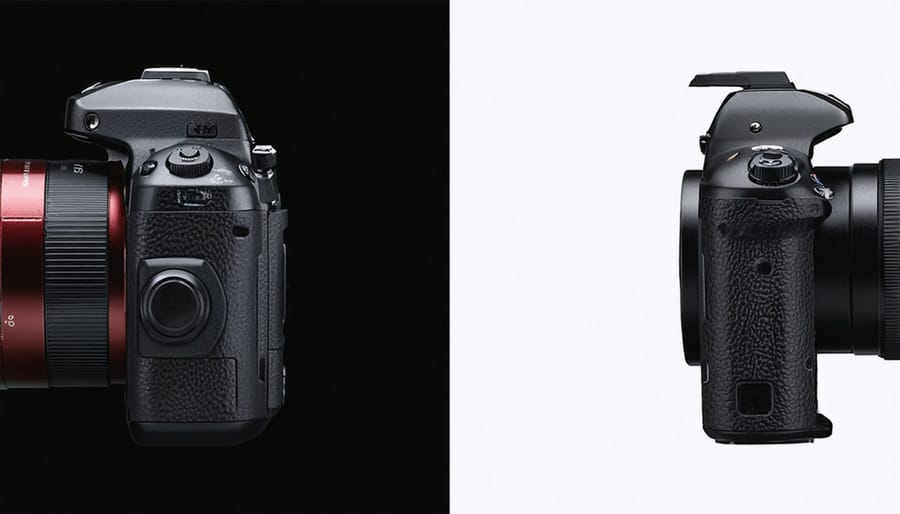
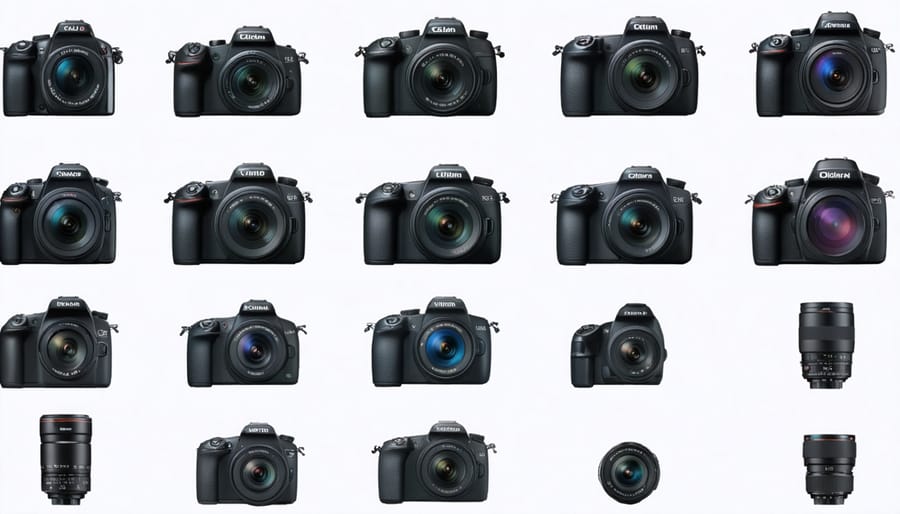
Top Camera Recommendations by Budget
Entry-Level Options (Under $1,000)
Starting your music video journey doesn’t require breaking the bank. Several best video cameras under $1,000 offer impressive features that can help you create professional-looking content.
The Canon M50 Mark II stands out as a versatile option, offering 4K recording capabilities, excellent autofocus, and a flip screen perfect for self-recording. Its compact size and user-friendly interface make it ideal for beginners, while its image quality rivals more expensive models.
The Sony ZV-E10 deserves special attention for its music video potential. It features specialized audio capabilities, including a high-quality built-in directional microphone and windscreen. The camera excels in low-light conditions and offers slow-motion recording at 120fps, essential for creating dynamic music video effects.
For those prioritizing portability, the Panasonic Lumix G7 delivers solid 4K performance and impressive image stabilization. Its intuitive controls and customizable settings allow you to grow with the camera as you develop your skills.
The Fujifilm X-T200 offers a unique color science that many music video creators love, producing vibrant, cinema-like footage straight out of camera. Its large touchscreen and simplified menu system make it particularly appealing for newcomers.
Remember, these entry-level cameras often come with kit lenses that are perfectly capable of producing professional results. The key is mastering your chosen camera’s features and understanding basic cinematography principles. While they may lack some advanced features of higher-end models, these cameras provide excellent starting points for creating compelling music videos.
Mid-Range Powerhouses ($1,000-$3,000)
In the mid-range category, you’ll find cameras that strike an excellent balance between professional features and reasonable pricing. The Panasonic GH5 stands out as a favorite among music video creators, offering 4K 60fps recording, excellent image stabilization, and robust color profiles for post-production flexibility. Its micro four-thirds sensor delivers sharp imagery while keeping the camera body compact and manageable.
The Sony A7 III deserves special mention for its exceptional low-light performance and full-frame sensor, making it perfect for dimly lit concert venues and moody music video aesthetics. Its advanced autofocus system keeps performers in sharp focus, even during dynamic performances.
For those preferring the cinema camera route, the Blackmagic Pocket Cinema Camera 6K offers incredible value. It captures stunning 6K footage with a Super 35 sensor and provides professional codec options like ProRes and Blackmagic RAW. While it requires more accessories to build out a complete rig, the image quality rivals cameras costing thousands more.
The Canon EOS R6 brings outstanding autofocus capabilities and excellent color science to the table. Its dual-pixel AF system excels at tracking performers, while the in-body stabilization helps achieve smooth movement shots without expensive gimbals.
Each of these cameras comes with distinct advantages:
– Panasonic GH5: Best all-rounder with excellent stabilization
– Sony A7 III: Superior low-light performance and autofocus
– Blackmagic Pocket 6K: Cinema-quality image and professional codecs
– Canon R6: Reliable autofocus and natural skin tones
At this price point, you’re investing in cameras that can handle professional productions while offering room to grow. Consider factors like lens compatibility, battery life, and recording limits when making your final choice. Remember to budget for essential accessories like memory cards, extra batteries, and quality audio equipment to maximize your camera’s potential.
Professional Solutions ($3,000+)
When it comes to high-end professional video cameras, you’re entering the realm of cinema-quality production. The Red Komodo 6K stands out as a powerhouse, offering stunning 6K resolution and impressive dynamic range that captures the subtle nuances of stage lighting and performance. Its compact form factor makes it perfect for music video shoots where mobility is crucial.
The Sony FX6 has become a favorite among music video directors for its exceptional low-light performance and cinematic full-frame sensor. Its dual-base ISO and 15+ stops of dynamic range ensure pristine image quality whether you’re shooting in dim concert venues or bright outdoor locations. The built-in ND filters are particularly valuable for maintaining creative control over exposure in challenging lighting conditions.
For those seeking the ultimate in image quality, the ARRI Alexa Mini LF delivers unmatched color science and dynamic range. While it comes with a premium price tag, it’s the go-to choice for high-budget productions where image quality cannot be compromised. Its large-format sensor creates that distinctive cinematic look that sets professional music videos apart.
The Canon C500 Mark II offers a versatile solution with its modular design and impressive 5.9K full-frame sensor. Its user-friendly interface makes it accessible for smaller production teams, while its robust codec options and RAW recording capabilities ensure maximum flexibility in post-production.
Each of these cameras supports professional audio inputs, timecode synchronization, and advanced monitoring options – essential features for coordinating complex music video shoots. They also offer various frame rates for slow-motion effects and are compatible with professional-grade cinema lenses for achieving that perfect aesthetic.
Critical Accessories for Music Video Production
Stabilization Solutions
Achieving smooth, professional-looking footage is crucial for music videos, and proper stabilization can make or break your shot. A 3-axis gimbal stabilizer is often considered the gold standard, offering fluid movement and counteracting hand shake in all directions. Popular options like the DJI RSC 2 or Zhiyun Crane series provide excellent stability while remaining relatively affordable for most creators.
For more budget-conscious shooters, a good quality monopod can work wonders. While not as versatile as a gimbal, it provides vertical stability and can help create smooth panning shots when used correctly. Some videographers combine a monopod with their camera’s built-in electronic stabilization for enhanced results.
Steadicam-style stabilizers, though requiring more practice to master, offer a unique floating effect that’s perfect for music video aesthetics. The Glidecam HD series, while more expensive, provides professional-grade stabilization without the need for batteries or electronic components.
Don’t overlook simpler solutions like shoulder rigs and chest mounts. These affordable options can provide adequate stabilization for many situations, especially when shooting run-and-gun style music videos. They’re particularly effective when combined with a camera that features good in-body stabilization.
Whatever system you choose, remember that practice is essential. Even the most expensive stabilizer won’t produce smooth footage without proper technique and familiarity with the equipment.
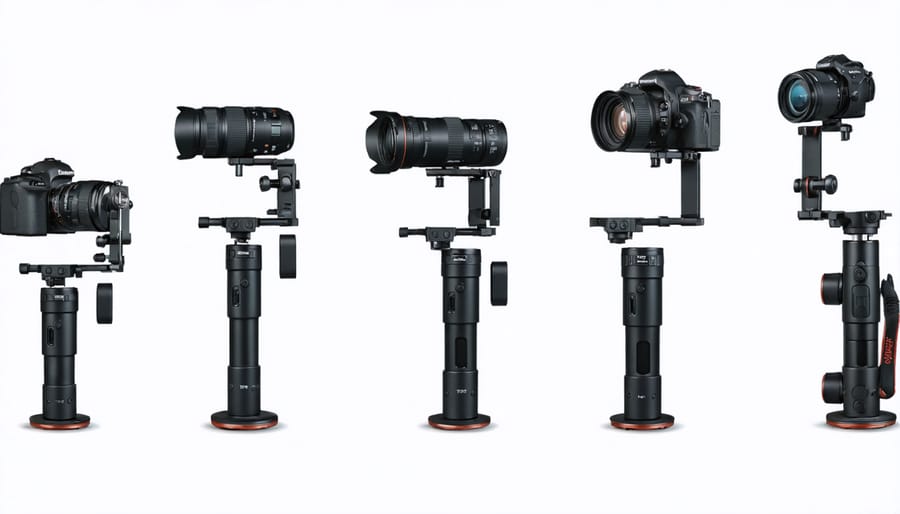
Audio Recording Equipment
While a great camera is essential for your music video, capturing high-quality audio during filming is equally important, even if you’re planning to overlay the final track later. A reliable audio setup helps with synchronization and provides backup audio if needed.
At minimum, invest in a decent shotgun microphone that mounts to your camera’s hot shoe. The Rode VideoMic Pro+ and Sennheiser MKE 400 are popular choices that deliver clear, directional audio without breaking the bank. These mics effectively reduce ambient noise and focus on your subject.
For professional-grade productions, consider a dual-system audio setup. This involves using separate audio recorders like the Zoom H4n Pro or Tascam DR-40X, paired with lavalier microphones for vocals and instrument-specific mics for live performances. This approach gives you more control over audio levels and backup recordings.
Don’t forget these essential accessories:
– Windscreens or dead cats for outdoor shooting
– XLR cables for professional microphone connections
– Headphones for monitoring audio levels
– Shock mounts to minimize handling noise
Remember to always do a test recording before your main shoot and monitor audio levels throughout. Even if you’re using the studio track in the final video, good reference audio makes post-production synchronization much easier and more precise.

Real-World Shooting Tips
Getting great footage for your music video starts with proper preparation. Scout your location beforehand and consider the lighting conditions you’ll be working with. Natural light can be your best friend, but it’s essential to plan your shoots around the golden hour (just after sunrise or before sunset) for that cinematic look.
When filming performance sections, use a combination of wide, medium, and close-up shots to create visual interest. Start with a stable tripod shot to establish the scene, then mix in handheld footage for energy and movement. Remember to capture at least 3-4 takes of each scene from different angles – this will give you more options during editing.
Pay special attention to your camera settings. For most music videos, shoot at 24fps for that film-like quality, but consider 60fps or higher for slow-motion segments. Set your shutter speed to double your frame rate (1/50 for 24fps) to maintain natural-looking motion blur. When it comes to exposure, slightly underexposing can help preserve highlights and give you more flexibility in post-production.
Focus is crucial in music videos. For solo artists, keep the aperture between f/2.8 and f/4 to maintain sharp focus while still achieving that pleasing background blur. For band performances, consider stopping down to f/5.6 or higher to keep multiple members in focus. Use continuous autofocus for tracking moving subjects, but don’t be afraid to switch to manual focus for more controlled shots.
Color temperature consistency is often overlooked but vital. Set a custom white balance at your location and stick with it throughout the shoot. This will save you considerable time in post-production. If you’re shooting in a picture profile like S-Log or C-Log, expose slightly to the right to maintain clean shadows.
Movement adds energy to music videos, but it needs to be purposeful. When using a slider or dolly, move with the rhythm of the music. For handheld shots, use a gimbal or stabilizer to smooth out your movements while still maintaining that organic feel. Remember to record at least 5 seconds before and after each take to give yourself editing flexibility.
Finally, always monitor your audio, even though you’ll be using the studio track in the final video. Good reference audio helps with synchronization in post-production and ensures your artists stay on beat during performances.
Choosing the right camera for music video production ultimately depends on your specific needs, creative vision, and budget. Throughout this guide, we’ve explored various options that cater to different skill levels and price points, from entry-level mirrorless cameras to professional cinema cameras.
Remember that the key features to prioritize are high-quality 4K recording capabilities, excellent low-light performance, reliable autofocus, and robust audio input options. The Sony A7 III and Blackmagic Pocket Cinema Camera 6K stand out as particularly versatile choices that offer exceptional value for their respective price points.
For those just starting their music video journey, the Canon EOS R6 or Sony A7 III provide an excellent balance of features and usability. If you’re working with a tighter budget, the Panasonic Lumix GH5 remains a capable and cost-effective option that doesn’t compromise on essential features.
Professional videographers looking to elevate their production value should consider investing in the Canon C70 or Blackmagic Pocket Cinema Camera 6K. These cameras offer superior dynamic range, professional codecs, and enhanced color science that will give your music videos a truly cinematic look.
Whichever camera you choose, remember that great music videos result from a combination of technical capability and creative vision. Consider renting different cameras before making a final purchase, and focus on mastering your chosen equipment’s features to maximize its potential. With the right camera and dedication to your craft, you’ll be well-equipped to create compelling music videos that bring your artistic vision to life.

